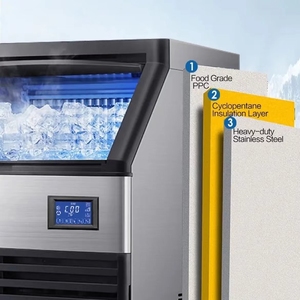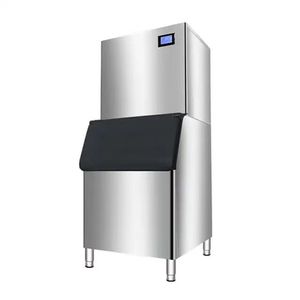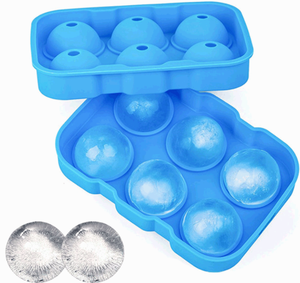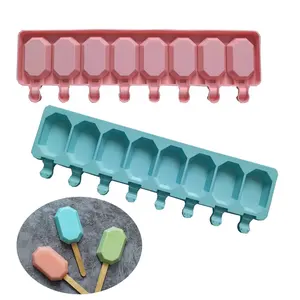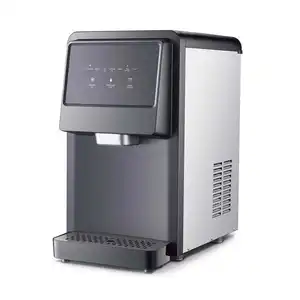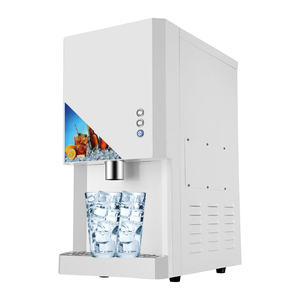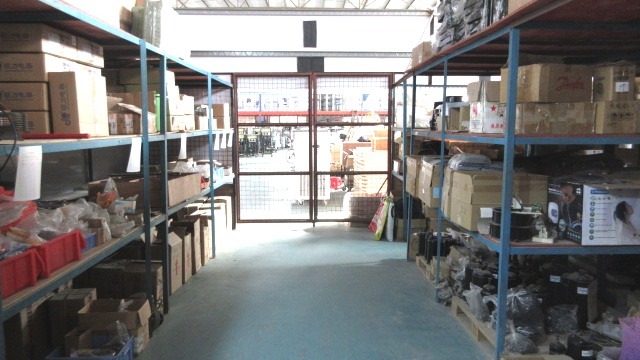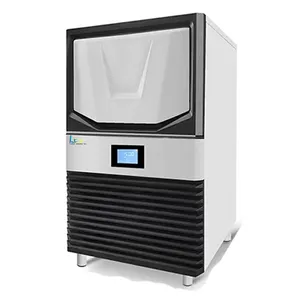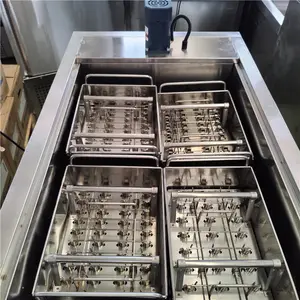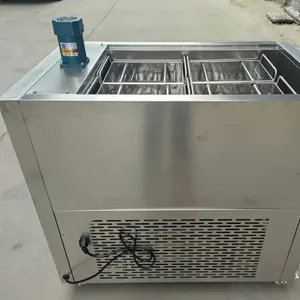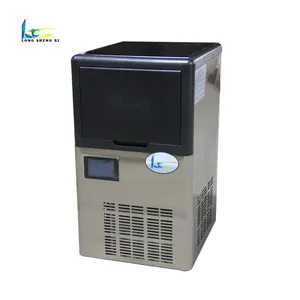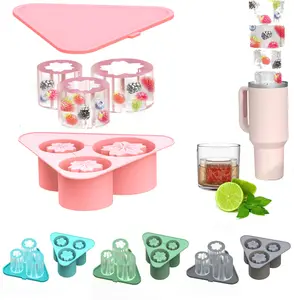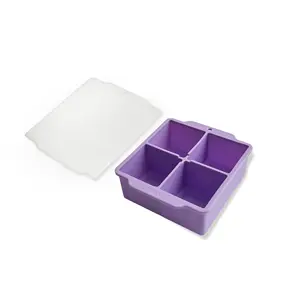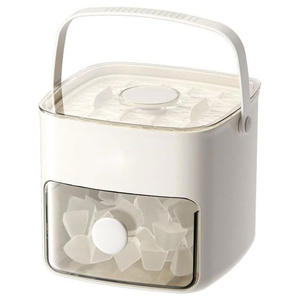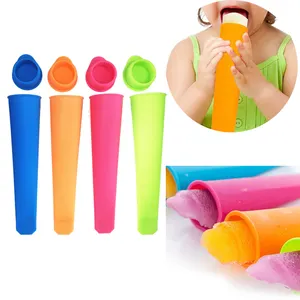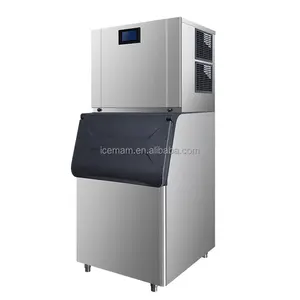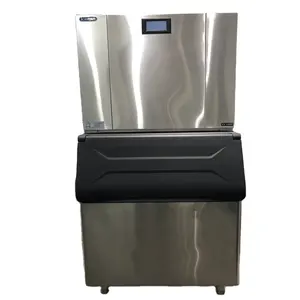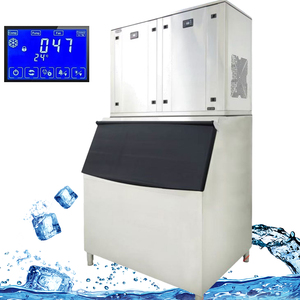Icebreaker Pop Ice Cube Maker






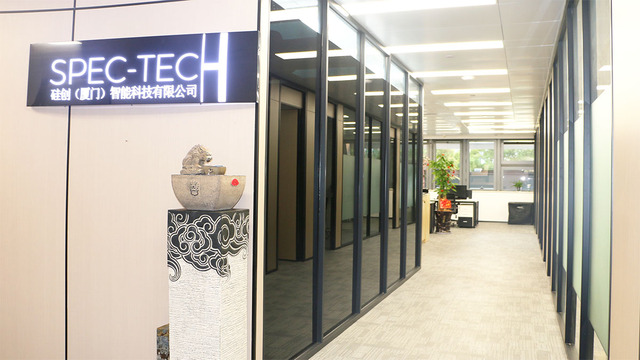





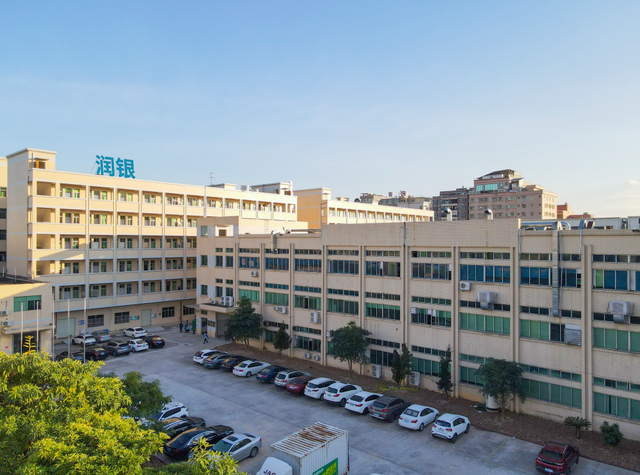





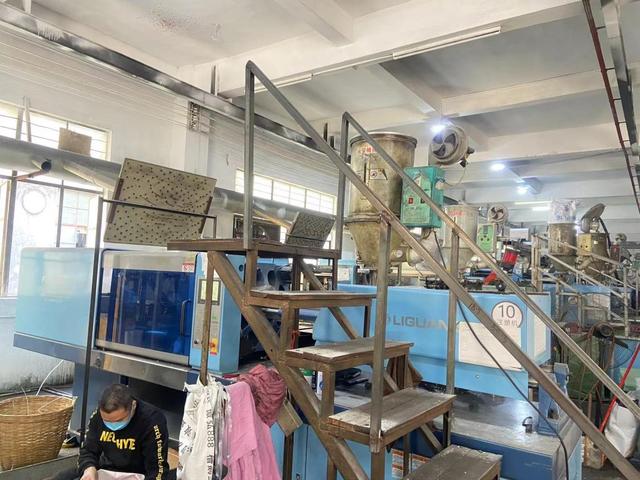















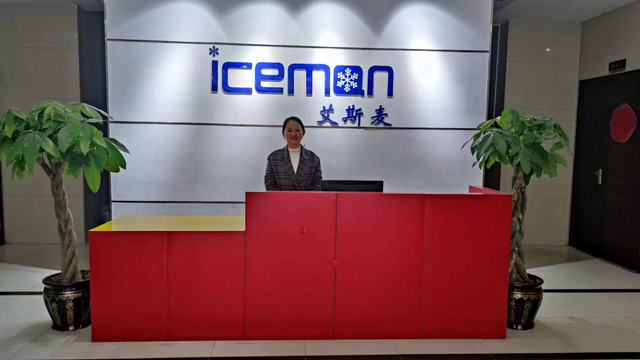
About icebreaker pop ice cube maker
Where to Find Icebreaker Pop Ice Cube Maker Suppliers?
China remains the central hub for manufacturing ice cube makers, silicone molds, and related food-grade plastic or rubber products, with key production clusters in Zhejiang, Shanghai, and Fujian provinces. Ningbo and Shanghai serve as primary export centers, hosting vertically integrated facilities capable of producing both commercial ice machines and consumer-grade pop ice molds. These regions benefit from mature supply chains for stainless steel, food-grade silicone, and injection molding components, enabling cost efficiencies of 20–35% compared to equivalent Western manufacturers.
The industrial ecosystem supports dual-market specialization: large-scale commercial ice machines (ranging from 40kg to 500kg/day output) are predominantly manufactured in Shanghai and Ningbo, while artisanal pop ice molds and silicone trays are mass-produced in Xiamen and surrounding areas. Proximity to port infrastructure—particularly Ningbo-Zhoushan Port—ensures rapid container loading and global shipment within 15–25 days via sea freight. Buyers gain access to scalable production networks where tooling, molding, packaging, and quality control are managed in-house, reducing lead times to 20–35 days for standard orders.
How to Choose Icebreaker Pop Ice Cube Maker Suppliers?
Selecting reliable suppliers requires systematic evaluation across technical, operational, and transactional dimensions:
Product & Material Compliance
Verify that silicone-based pop ice molds comply with FDA and LFGB standards for food contact safety. For commercial electric ice makers, confirm CE, RoHS, and ISO 9001 certifications. Stainless steel components should be at minimum grade 304, with evidence of corrosion resistance testing. Request material compliance documentation and batch-specific test reports for electrical systems (if applicable).
Production Capacity and Flexibility
Assess supplier capabilities based on the following benchmarks:
- Minimum monthly output capacity exceeding 50,000 units for mold suppliers
- In-house mold design and CNC tooling teams for custom shape development
- Injection molding machines rated for food-grade silicone (Shore A 40–60 hardness)
- For commercial ice machines: refrigeration system integration (air-cooled/condenser types) and daily ice yield verification
Cross-reference listed product ranges with actual factory footage or audit reports to validate claimed capabilities.
Transaction and Quality Assurance
Prioritize suppliers with documented quality management systems and third-party transaction safeguards. On-time delivery rates above 98%, response times under 5 hours, and reorder rates exceeding 18% indicate operational reliability. Use sample testing to evaluate demolding ease, structural durability after freeze-thaw cycles, and dimensional accuracy. For bulk orders, implement pre-shipment inspections (PSI) to verify packaging integrity and product consistency.
What Are the Best Icebreaker Pop Ice Cube Maker Suppliers?
| Company Name | Main Products | Price Range (USD) | Min. Order Quantity | On-Time Delivery | Avg. Response | Reorder Rate | Online Revenue |
|---|---|---|---|---|---|---|---|
| Ningbo Bagus Appliance Co., Ltd. | Commercial ice machines (40–500kg/day) | $352–2,900 | 1 piece | 100% | ≤5h | 20% | US $2.7M+ |
| NINGBO JINGRONG IMP AND EXP CO.,LTD | Silicone pop molds, ice trays, DIY kits | $0.58–2.80 | 100 pieces | 98% | ≤3h | 19% | US $120K+ |
| Shanghai Tolcat Industrial Co., Ltd. | Commercial ice machines, popsicle equipment | $180–499 | 1 piece / 1 m³ | 99% | ≤2h | 20% | US $300K+ |
| Spec-Tech (Xiamen) Co., Ltd. | Silicone ice trays, plastic cups, cake pop molds | $0.39–2.19 | 200–500 pieces | 100% | ≤1h | 18% | US $40K+ |
| Ningbo Xinggui Rubber Plastic Co., Ltd. | Silicone ice cream molds, cake pop forms | $0.45–0.68 | 3–10 pieces | 98% | ≤8h | <15% | US $40K+ |
Performance Analysis
Ningbo Bagus Appliance leads in commercial-grade ice machine supply, offering high-capacity units with full OEM support and a 100% on-time delivery record. NINGBO JINGRONG and Spec-Tech (Xiamen) specialize in low-cost, high-volume silicone molds ideal for retail and promotional markets, supported by sub-3-hour response times. Shanghai Tolcat distinguishes itself with competitively priced commercial systems and strong compliance documentation, making it suitable for regulated markets. While Ningbo Xinggui offers the lowest MOQs (as low as 3 pieces), its lower reorder rate suggests potential limitations in post-sale service or scalability. Buyers seeking customization should prioritize suppliers with in-house R&D teams and mold-making facilities, confirmed through video audits or sample iteration timelines.
FAQs
How to verify ice cube maker and pop mold supplier reliability?
Cross-check compliance certifications (CE, FDA, LFGB) with official databases. Request factory audit reports or video walkthroughs of production lines. Analyze transaction history, focusing on consistent on-time delivery (>98%) and repeat buyer activity (reorder rate >18%). Validate material safety data sheets (MSDS) for silicone and plastic components.
What is the typical sampling timeline for custom ice molds?
Standard sample production takes 7–14 days for existing molds. Custom designs requiring new tooling take 18–25 days, including CNC machining and first-article inspection. Air shipping adds 5–10 days depending on destination.
Can suppliers accommodate private labeling and packaging?
Yes, most suppliers offer OEM services including logo printing, color customization, and branded packaging. Minimum order thresholds typically start at 1,000 units for full branding. Confirm artwork submission formats and labeling compliance with regional food safety regulations.
What are common MOQ and pricing structures?
Commercial ice machines often have MOQs of 1 unit with prices starting at $180. Silicone molds require higher volumes—typically 100 to 500 pieces—with unit costs decreasing significantly beyond 1,000 units. Negotiate tiered pricing based on cumulative annual volume.
How to manage logistics and import compliance?
Confirm FOB or CIF shipping terms and ensure suppliers provide complete export documentation. For electric ice machines, verify voltage compatibility (110V vs. 220V) and certification alignment with destination markets (e.g., UL listing for North America). Sea freight is optimal for containerized orders; air freight suits urgent samples or small batches.














